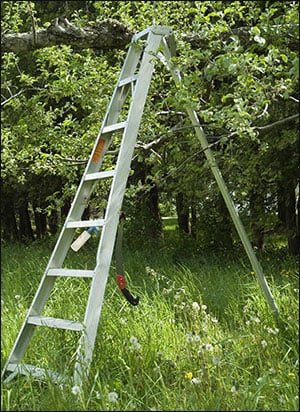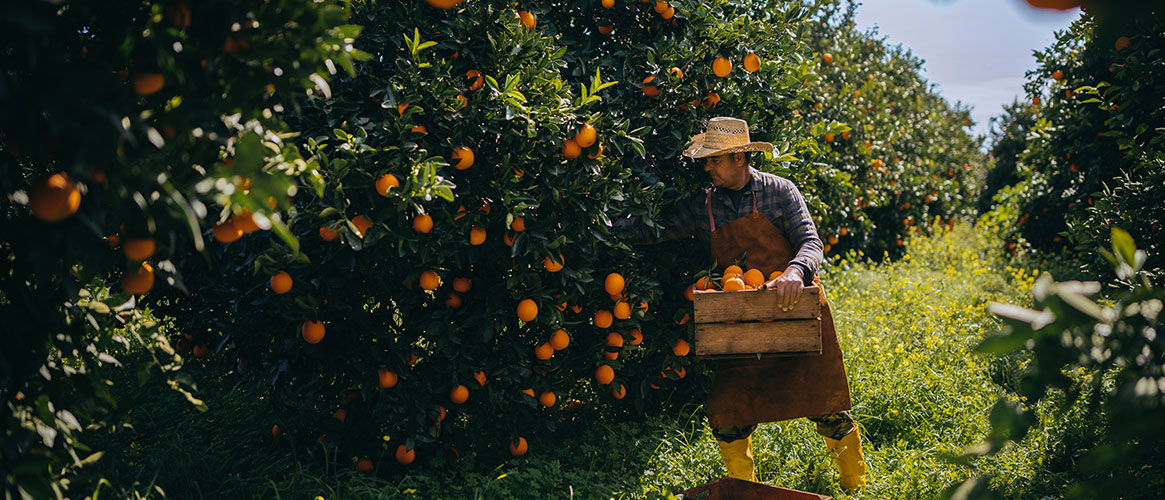With a three-legged ladder, rough terrain, and going up and down the ladder 100 times a day, citrus harvesting is a balancing act—and possibly an accident waiting to happen. And, with the harvesting season in full swing during the winter and spring months, unpredictable weather conditions that can lead to soft and slippery ground can increase the risk of injury even more.
What your employees need to know about citrus harvesting
The three-legged citrus harvesting ladder is designed to get the worker closer to the fruit. These are less stable than a four-legged alternative, which increases the chance the ladder may fall. This can further be compounded by slippery ground that can result from heavy snow and rain that's possible during the harvesting season.
Compounding matters is that workers often lean to one side or another to pick the fruit, which increases the chances the ladder will fall. As harvesters fill each bag, the increasing weight makes the ladder top-heavy, which creates a fall risk if the bag is not positioned properly.
What your employees need to do when harvesting citrus

Your employees should follow these steps to best ensure their safety:
- Check ladders each time before climbing to make sure they are resting evenly on the ground and that the contact area against the tree is adequately supported.
- Always maintain three points of contact when climbing the ladder.
- Establish a secure position on the ladder while picking and balancing the bag of fruit.
- Never climb beyond the third rung from the top of the ladder.
- Check your ladder for damage, and don’t use the ladder if it is damaged.
- If the ground is wet, make sure the ladder isn’t sinking into the mud.
- Check shoes and ladder rungs to keep them free of mud build-up, to avoid creating a slippery surface.
- Don’t “over-reach” for the fruit. Leaning too far to one side or the other can cause the ladder to fall.
- Picking should start from the top of the tree, with pickers moving downward on the ladder as the bags become fuller and heavier.
- Stretch muscles before and during the workday to help prevent strains and reduce fatigue.
What to cover at your safety meeting on citrus harvesting
Since weather conditions can change throughout the harvesting season, make sure your workers walk the grounds each day to identify wet or unstable ground, and repeat this process during the day if conditions change. If you manage multiple sites, conduct a safety meeting at each location.
Other topics to cover include:
- Demonstrating how to climb a citrus ladder safely
- Showing your workers how to place the ladder properly, ensuring the best possible stability, even when ground is soft or uneven
- Demonstrating how to work safely from the ladder, including where to place the bag, and how far your employees can safely reach for fruit
- Stressing the importance of safety over quantity by directing your workers to climb off the ladder and move it frequently, rather than risking a fall
You'll also want to show your workers how to properly carry the bag after they get off the ladder:
- A full bag of citrus can weigh up to 80 pounds and harvesters constantly carry these bags to dump into larger containers.
- The weight in the bags should be distributed evenly, the bags should not hang off to one side of the body, and the weight should be carried as close as possible to the harvester’s body.
Talk to your employees today about how these steps help provide a more comfortable workplace for them and help keep them safe on the job.

